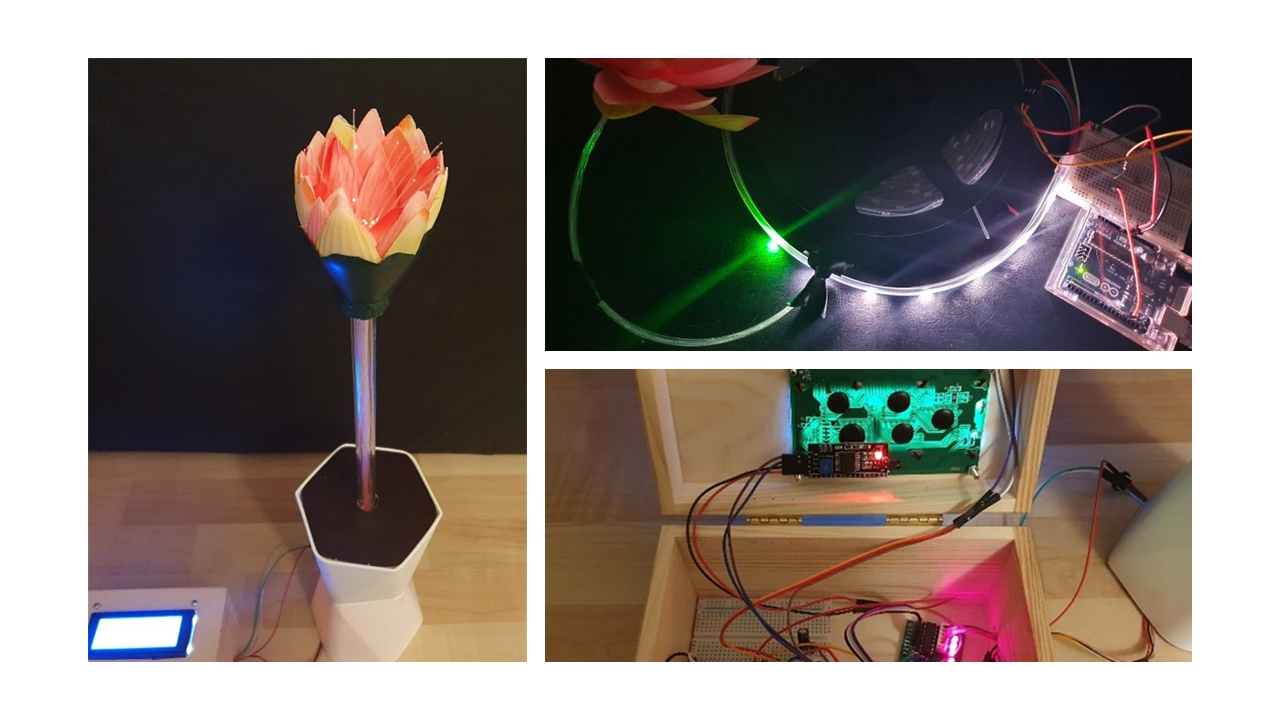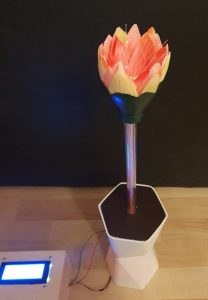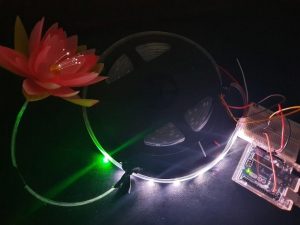
04 Aug The Artificial Flower- A way to motivate older adults to be more physically active
In the context of Pharaon, the artificial flower has been developed within the scope of a bachelor thesis at the University of Twente. The background of the bachelor thesis was to motivate older adults to be more physically active. To do so, data about the user’s physical activity is collected by an accelerometer, called “MOX sensor”, developed by Maastricht Instruments.
During the development of the artificial flower, the creative technology design process has been used. That means, before coming up with a final design, different prototypes had been developed and improved several times (Figure 1).
- Figure 1 – Testing of parts and prototypes
- Figure 2 – Electronic hardware (Arduino Uno)

Figure 3- The final Prototype of the Artificial Flower
The artificial flower visualizes the activity progress of the user to make the data more touchable, intuitive, and understandable for the users. The growing progress of the flower adapts to the physical activity progress of the user. This can be, for instance, minutes of activity or footsteps. To process the data and to make the movement possible, an Arduino Uno controls every part of the system (Figure 2).
If the user is physically active, the flower starts to bloom and the built-in fiber optic cables change colors (Figure 3). If the user achieves his or her individual daily goal, the flower will be completely open and the fiber optic cables start a goal animation.
The results of the evaluation have shown that the older adults were more motivated to achieve their goals because they wanted the flower to be completely open. Therefore, the solution of an artificial flower can be one promising way to visualize data for older adults to be more physically active.
The flower also won the Niers Fund eHealth Voucher which includes a voucher of 5,000 EUR for further improvements and development.
For more information, the thesis can be found under: https://purl.utwente.nl/essays/91896

Flower wins the Niers Fund eHealth Voucher



